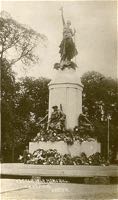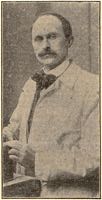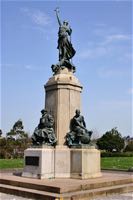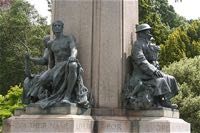
Exeter's Northernhay War Memorial
Page updated 29th June 2016
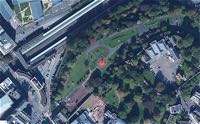 The Exeter Committee for a War Memorial to remember the dead of the city, had at first wanted to work with the Devon Committee to erect a memorial for the dead of both Devon and Exeter, within the city, but cooperation was not given. The Exeter Committee then decided to go ahead with their own memorial to the dead of the city. A design by John Angel was selected in August 1919. The memorial was dedicated on 29th April 1923 with pupils from Exeter
schools invited to attend the unveiling. Two children were selected to lay their own wreath of laurels—Harry Norton from Ladysmith Boys, and Hilda Wilkey from St Sidwell's Girls. Mr Way of Central School painted the central inscription on the wreath: "From the children of the City of Exeter, in grateful remembrance of all those who laid down their lives for us."
The Exeter Committee for a War Memorial to remember the dead of the city, had at first wanted to work with the Devon Committee to erect a memorial for the dead of both Devon and Exeter, within the city, but cooperation was not given. The Exeter Committee then decided to go ahead with their own memorial to the dead of the city. A design by John Angel was selected in August 1919. The memorial was dedicated on 29th April 1923 with pupils from Exeter
schools invited to attend the unveiling. Two children were selected to lay their own wreath of laurels—Harry Norton from Ladysmith Boys, and Hilda Wilkey from St Sidwell's Girls. Mr Way of Central School painted the central inscription on the wreath: "From the children of the City of Exeter, in grateful remembrance of all those who laid down their lives for us."
The memorial was dedicated by the Bishop of Crediton and unveiled by the Right Honourable Admiral David Beatty. Beatty was given the Freedom of the City at a ceremony at the Guildhall, prior to the unveiling of the memorial. The Last Post and Reveille was played by buglers of the Devons, standing on Athelston's Tower to conclude the ceremony.
The Bronze Figures
Originally costed at £5,000, it eventually cost £6,000, a sum raised by donations from the public. It is considered to be one of the finest of its type in the country. The memorial was placed at a prime location in Northernhay Park, at the top of the entrance drive from Queen Street, partly overlaying the site of Northernhay House that had been demolished in 1914.
Around the base there are figures in bronze of a soldier at rest, a sailor astride the hull of a ship with a figurehead in the form of the Exeter City Coat of Arms, a prisoner of war inspired by the work done by Lady Owen and a group of Exonians with prisoners of war in Germany and a VAD nurse alongside a sheaf of corn and a shrapnel shell, representing agricultural and armaments work done by woman across the country.
The 8ft high figure of Victory trampling over the Demon of Tyranny and Wrong, also in bronze, stands on the top of the pedestal. The bronze figures were cast by the Morris Art Foundry and A B Burton Foundry. Morris' were also responsible for the figure of Justice on top of the Old Bailey, and A B Burton for the bronzes on the Cenotaph.
A bronze plaque on the monument is dedicated to the 958 men and women of Exeter who died between 1914 and 1918. Additional bronze plaques for the dead of the Second World War are on the base. The Devon granite pedestal was from Blackingstone Quarry, Moretonhampstead, and was quarried and erected by Messrs. Easton & Son of Northernhay Street. The total height is 31ft on a 23ft square base.
The Artist
It is the work of John Angel FRBS, a local artist, who at the time, lived at 47 Okehampton Road, St Thomas. Angel served an apprenticeship with J Wippel and Co., and also attended Exeter School of Art. He initially worked for Herbert Read, an ecclesiastical restorer, before going on to the Lambeth School under Sir George Frampton RA. Angel was awarded a scholarship to attend the Royal Academy of Art after winning many prizes at Lambeth.
Returning to Exeter in 1912, he slowly acquired a reputation for high quality work, and was elected a Member of the Royal Society of British Sculptors in 1919. In July of the same year he was commissioned to create the Exeter War Memorial. After this commission, Angel emigrated to the United States, where he worked on the New York cathedrals of St Patrick's and St John the Divine.
Source: Express and Echo, British Newspaper Archive.
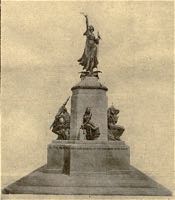
This drawing of the proposed War Memorial, by John Angel was published in the Western Times on 22 August 1919.
│ Top of Page │
